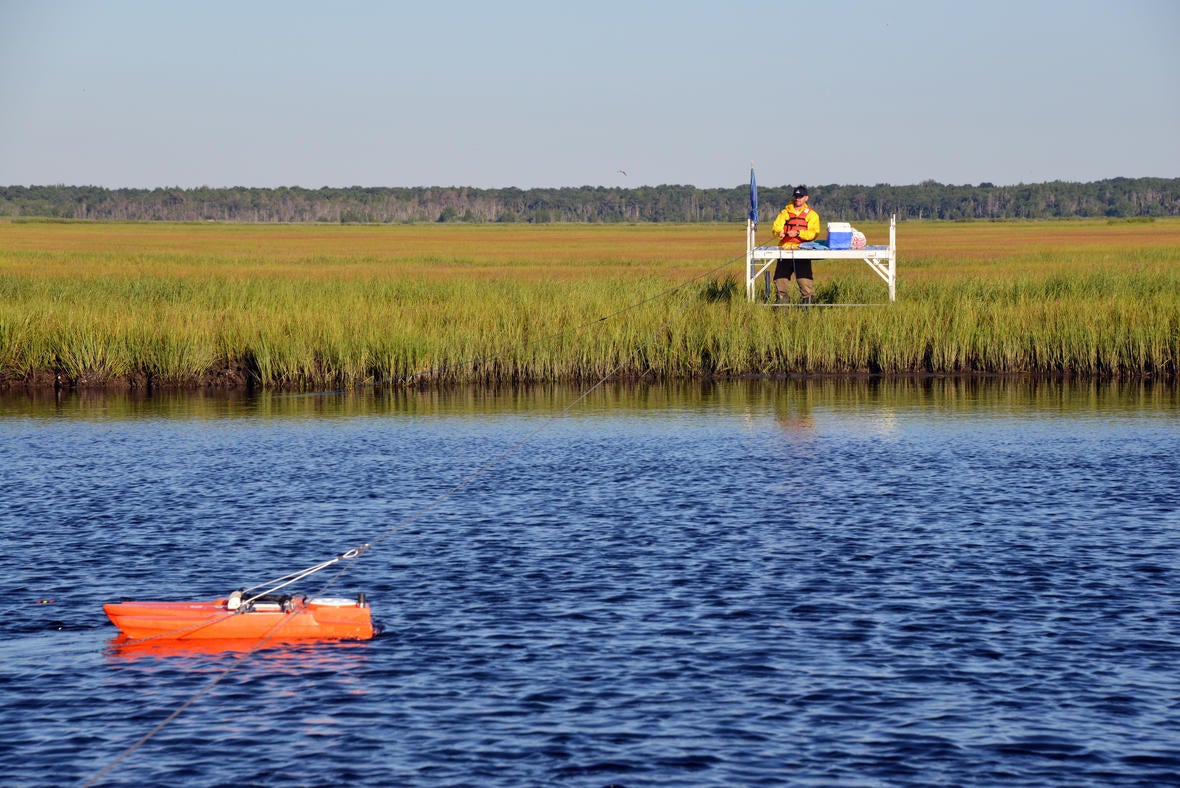Study: 2 N.J. salt marshes are ‘losing ground’ to environmental influences

USGS scientist Zafer Defne measures water and sediment movement at Forsythe National Wildlife Refuge
Scientists working on an assessment of salt marshes along the U.S. coast say half of those they studied will be gone in up to 350 years if lost ground isn’t regained.
Salt marshes provide vital habitat for animals and are important for their role in coastal protection. But the ecosystems along the coasts are falling victim to pressures such as sea-level rise and changing land uses, and are flooded frequently by seawater.
The U.S. Geological Survey set about to determine the danger erosion poses to eight salt marshes on the two coasts. The agency says it was surprised to find all eight of the marshes losing ground, some severely.
The study involved marshes in California, Maine, Maryland and New Jersey.
In the Garden State, researchers studied Reedy Creek and Dinner Creek at New Jersey’s Edwin B. Forsythe National Wildlife Refuge and Schooner Creek.
They employed remote sensing techniques, including aerial photography, to determine how much of an individual marsh is open water and covered by marsh plants.
From there, the researchers compared the ratio of ponds, channels, and tidal flats to the overall vegetation to determine the chance of survival during changing environmental conditions.
“Think of a marsh as similar to a savings account, with sediment as the principal,” said oceanographer Neil Ganju of the USGS Woods Hole Coastal and Marine Science Center. “Every new deposit of sediment is like interest added to the principal, and every sediment loss is like money spent. If a marsh is gaining sediment, it can tolerate some withdrawals, and the budget will still be in the black. If it’s losing sediment, that marsh is in the red. Its sediment either gets replenished by natural processes or human intervention, or eventually the principal will all be spent.”
According to the study, the New Jersey marshes will survive for between 170 and 350 years.
But the researchers cautioned that the figure is an estimate with a large margin of error and doesn’t necessary mean that the marshes are “doomed.”
Rather, the researchers say, it’s a signal that the marshes need infusions of sediment to survive longer.
You can read the study here.
—————————————————————-
The Associated Press contributed to this report.
WHYY is your source for fact-based, in-depth journalism and information. As a nonprofit organization, we rely on financial support from readers like you. Please give today.

